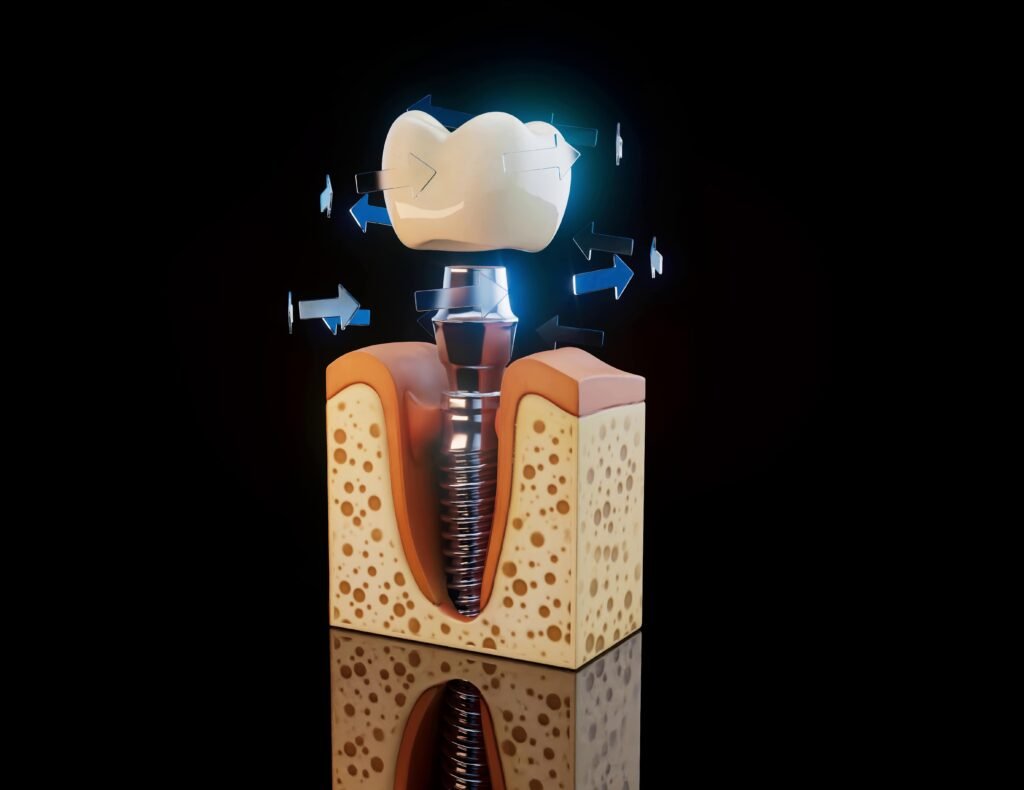Thinking about restoring your smile with dental implants? If so, you’ve likely come across the term endosteal implant—the most commonly used and reliable implant option in modern dentistry. But what exactly is an endosteal implant, how does it work, and is it the right solution for your needs?
In this comprehensive guide, you’ll learn everything you need to know—from what is endosteal implant to the procedure, recovery, cost, and how it compares to other types of dental implants.
Table of Contents
ToggleWhat Is Endosteal Implant?
Endosteal implant cost depends on several factors:
Location and clinic expertise
Material of implant (titanium vs zirconia)
Need for bone grafting or additional procedures
In many cases, the cost structure resembles other dental implant treatments, which includes the implant, abutment, crown, and diagnostic work.
For patients comparing options, it’s helpful to look at alternatives like mini dental implants to see how pricing varies based on structure and longevity.
Ready to find out if they’re right for you? Book your free consultation now.
Get a free consultation
Endosteal Implants Cost: What You Need to Know
Endosteal implant cost depends on several factors:
Location and clinic expertise
Material of implant (titanium vs zirconia)
Need for bone grafting or additional procedures
In many cases, the cost structure resembles other dental implant treatments, which includes the implant, abutment, crown, and diagnostic work.
For patients comparing options, it’s helpful to look at alternatives like mini dental implants to see how pricing varies based on structure and longevity.

Types of Endosteal Implants
When discussing the types of endosteal implants, it’s important to understand the implant’s design and function.
Common forms include:
Screw-shaped implants – the most common design
Blade implants – ideal for narrow jawbones
Custom root-analogue implants – used in specific cases for a custom fit
For a more comprehensive breakdown of implant designs, check out our article on what types of dental implants are available and how they compare.
Endosteal Implant Procedure: Step-by-Step
Endosteal Implant Recovery
After surgery, endosteal implant recovery typically takes a few months. Healing time varies based on bone health and implant stability. During recovery, patients may wear temporary restorations.
Want to know how long dental implants take to fully integrate and support your bite? Check out our recovery timeline guide.
Endosteal Implant Pictures: Visualizing the Result
Looking at endosteal implant pictures can help set realistic expectations. You’ll see pre- and post-surgery transformations that show the natural appearance of implants once healed and restored.
Real patient transformations, especially in celebrity dental implant cases, demonstrate how implants can rejuvenate both your smile and confidence.
Endosteal Implant vs Titanium Implant: What’s the Difference?
While “endosteal implant vs titanium implant” seems like a comparison, it’s often a misunderstanding. Most endosteal implants are made of titanium — a proven, biocompatible material. The real choice is often between titanium and alternatives like zirconia.
To learn more about material pros and cons, explore our breakdown of dental implant materials.

Endosteal Implants or Subperiosteal Implants: Which to Choose?
Choosing between endosteal implants or subperiosteal implants comes down to jawbone health.
Endosteal implants are placed inside the bone
Subperiosteal implants rest on top of the bone, under the gums
When bone volume is insufficient and bone grafting isn’t an option, subperiosteal implants can be a reliable solution.
Final Takeaway
Whether you’re looking into dental implants for the first time or weighing the differences between bridging of teeth and permanent solutions like endosteal implants, understanding the procedure, cost, recovery, and types is key to making a confident decision.
Explore more through our guides and expert consultation options at Kristal Clinic — and take the next step toward restoring your smile.
Is an endosteal implant painful?
The procedure is typically not painful due to local anesthesia. You may feel mild discomfort or swelling for a few days post-surgery, which is manageable with over-the-counter pain relievers.
How long is the endosteal implant process?
The full process can take 3 to 6 months, including healing. After placing the implant, your jawbone needs time to fuse (osseointegrate) before the final crown or bridge is attached.
Who is a good candidate for endosteal implants?
Ideal candidates have healthy gums, sufficient jawbone density, and no uncontrolled health conditions like diabetes or smoking that can interfere with healing.
What does an endosteal implant look like?
An endosteal implant typically looks like a small titanium screw. It’s placed into the jawbone and serves as an artificial root to support a dental crown, bridge, or denture.
What are the pros of endosteal implants?
Endosteal implants are stable, long-lasting, and preserve jawbone structure. They also feel and function like natural teeth, improving chewing, speech, and overall smile aesthetics.
